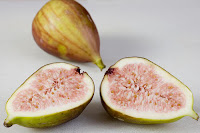Area rugs are sometimes known as “art
that you can walk on”.
As with all art, there are some designs
that capture the imagination like no other.
 |
| Various Boteh Designs |
Of all the copied designs none is more
well-known or more well-loved then the Boteh.
The Boteh is also known as the almond, the Kashmiri design or as we know
it here in the west - the Paisley. It is in the shape of a teardrop with the
upper part turned.
Most experts tend to agree that the
origin Boteh comes from the Seraband region and it was first used in Mir carpets
which are sometimes known as the “Boteh Mir”.
 |
| Inspiration for the Boteh Design |
The inspiration for its shape has been
called the pear or fig or a pinecone and was most likely based on the shape of
the Cypress tree and known best as the fabled Tree of Life in Zoroastrian
folklore.
Boteh is a Persian word meaning bush,
shrub, a thicket (a small dense forest of small trees or bushes) bramble or
herbs. Some would even take it to mean a palm leaf, cluster of leaves (perhaps
as a repeated pattern) or as a flower bud. In Azerbaijan and in Kashmir (in the
north of the Indian sub-continent) the name used to describe the motif is Buta.
The most familiar Boteh motifs have
repeating patterns with each individual design to be small in size and arranged
in perpendicular lines to cover the whole field.
 |
| Repeating Boteh Design |
In Qum rugs made of wool it is often one
large leaf or the repeating pattern. It is very popular in the rugs of
Seraband, Mir, Kerman, Kashan, Derbent in Caucasia and widely used in the rugs
of Senneh.
According to an article published by Dr.
Cyrus Parham in 1999, it states that the Boteh motif has been prevalent in the
arts since the Scythian and Achaemenid art especially represented by the wings
of Homa or Senmurv.
In ancient Egypt it appears that some
silk garments are embellished with the Boteh design.
There is an interesting connection
between the pattern and the city of Egyptian city of Akhmim located on the
banks of the upper Nile. Akhmim was at the western end of the Aryan trade route
(better known as the Silk Road) and the design motif known as “Paisley” here in
the west was taken from the Aryan Boteh (botteh) motif.
The design was copied
from the costly silk and wool Kashmir shawls and adapted first for use on hand-looms, and, after 1820, on Jacquard looms. From roughly 1800 to 1850, the
weavers of the town of Paisley in Renfrewshire, Scotland, became the
foremost producers of these shawls.
 |
| Kashmir Shawl with distinct Boteh Design. |
To have your Boteh design inspired rug cleaned or restored the best place to bring it to on Vancouver Island is Luv-A-Rug Services Inc. located in Victoria BC.
They are the top area rug cleaning company in the Province. See them at luvarug.com